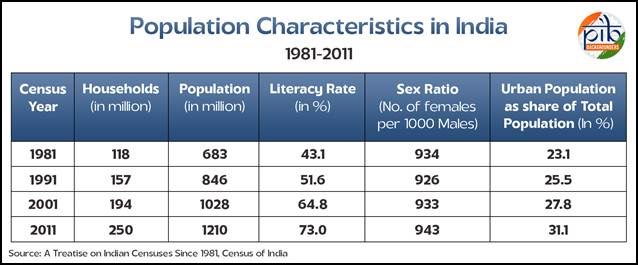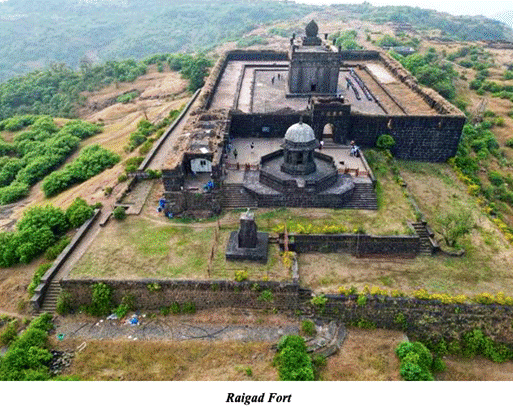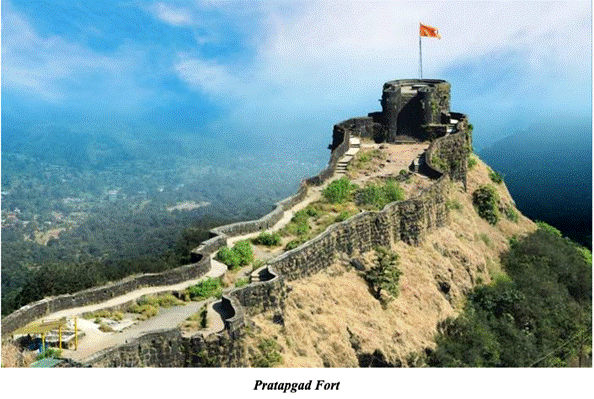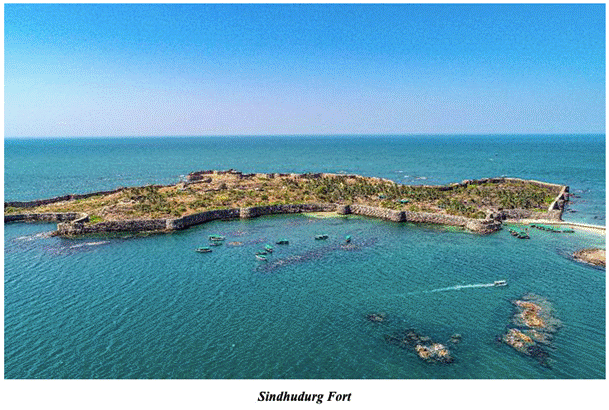Content :
- World Population Day 2025
- Maratha Military Landscapes of India Inscribed in the UNESCO World Heritage List as India’s 44th Entry
World Population Day 2025
- Theme: “Empowering young people to create the families they want in a fair and hopeful world.”
- Demographic context: Over 65% of India’s population is under 35—a critical demographic dividend.
- Global framing: Reaffirms commitments made at the 1994 International Conference on Population and Development (ICPD): rights-based family planning, gender equality, and informed reproductive choices.
Relevance : GS 1(Society ) ,GS 2(Governance , Social Issues)

Census 2027: A Paradigm Shift
- Scheduled Timeline:
- Phase 1 – Houselisting & Housing Census: Starts April 2026.
- Phase 2 – Population Enumeration: Begins March 2027 (Reference date: 1 March 2027; exception: 1 October 2026 for snow-bound areas).
- Postponed from 2021 due to COVID-19, making it India’s first census after a 16-year gap.
- Digital-First Features:
- Fully paperless, digital census.
- Mobile App & online self-enumeration (a first in Indian census history).
- Central Census Monitoring & Management Portal.
- Code Directory to streamline data processing and standardization.
- 35 lakh+ field functionaries to be trained digitally.

Caste Enumeration: A Historic Breakthrough
- First-time inclusion of caste for all communities since independence.
- Post-1947 practice: Caste data limited to SC/ST only.
- SECC 2011 collected caste data but was not officially released; 2027 will integrate caste in main census—addressing concerns over transparency and politicization.

Historic Roots of Census in India
- Ancient References:
- Arthashastra (321–296 BCE): Kautilya emphasized population count for governance.
- Ain-e-Akbari (1590s): Abul Fazl chronicled demographic and economic data under Akbar.
- Modern Census Beginnings:
- 1865–1872: First attempts, not simultaneous.
- 1881: First synchronized census—established India’s decadal census tradition.
- Legal Backbone:
- Census Act, 1948 & Census Rules, 1990—statutory basis for census operations.
Post-Independence Census Highlights (1951–2011)
| Census Year | Key Innovations / Contributions |
| 1951 | First post-independence census; pioneered field re-checking to verify data accuracy. |
| 1961 | Focused on rural crafts, festivals, introduced mechanical tabulation. |
| 1971 | First to capture migration data based on last residence. |
| 1991 | Only 45% digitization due to tech limits. |
| 2001–2011 | Adopted ICR tech (Intelligent Character Recognition) enabling 100% digitization. |
Census 2011: Scale, Structure & Data
Operational Metrics
- Enumerators: 2.7 million
- Geographical units:
- 35 States/UTs, 640 districts, 5,924 sub-districts
- 7,933 towns, 6.41 lakh villages
- Languages: Schedules printed in 16 languages
- Logistics:
- 5.4 million instruction manuals
- 340 million printed forms
Key Demographic Findings
- Total Population: 1.21 billion
- Males: 623.2 million
- Females: 587.6 million
- Decadal growth (2001–11): +182 million (+17.7%)
- Density: 382 persons per sq. km.
- Child Sex Ratio: 918 girls per 1000 boys
- Literacy Rate: 73.0% (M: 80.9%, F: 64.6%)
- Top states: Kerala (94.0%), Lakshadweep (91.8%), Mizoram (91.3%)
SECC 2011: Socio-Economic & Caste Census
- Conducting Ministries:
- Rural: Ministry of Rural Development
- Urban: Ministry of Housing & Urban Affairs
- Purpose:
- Data for welfare targeting, program design, and beneficiary selection.
- Tech Leap:
- Paperless enumeration using 6.4 lakh handheld devices
- Addressed 1.24 crore grievances with 99.7% resolution
- Caste Component:
- Data collected, but caste-wise data not made public
Why Census 2027 Matters
- Policy & Planning: Foundational for resource allocation, electoral boundaries, and welfare schemes.
- Federal Empowerment: Caste data enables targeted state-level interventions and accurate backward class identification.
- Global Significance: India may retain its position as world’s most populous country, highlighting its need for granular governance tools.
- AI & Big Data Integration: Digital census may evolve into a real-time demographic dashboard for India’s planning architecture.
India in the Global Census Context
- World’s largest census exercise involving over 130 crore individuals.
- Combines scale, complexity, diversity, and now digitization, setting a new global standard for democratic data collection.
Other important dimensions
Demographic Futures — Expanded Perspectives
- Comparative Lens: India’s age structure contrasts with ageing societies like Japan (median age: 49) vs. India (~28) — Census 2027 will sharpen India’s long-term demographic edge.
- Labour Market Integration: Census data can help map NEET (Not in Education, Employment or Training) youth – currently ~27% of youth (CMIE).
- Skilled vs. Unskilled Divide: Important for recalibrating Skill India strategy and vocational training.
- AI + Population Analytics: Use of demographic AI models to simulate regional fertility trends and future age pyramids.
Urbanization and Migration Realities — Deeper Layers
- First-Time Urban Count Clarity: Many “census towns” (urban in nature but governed rurally) to be properly identified — critical for urban finance devolution and AMRUT 2.0 targeting.
- Real Estate and Infrastructure: Housing census data will shape PM Awas Yojana, RERA regulations, and rent-control policy in Tier-2/3 cities.
- Transport & Commuting Census: Opportunity to map last-mile transport stress and commuting zones, helping shape urban mobility blueprints.
- Water Stress & Urban Demography: Linking urban population maps with groundwater and surface water usage patterns—crucial for Smart Cities 2.0.
Inclusion, Equity & Representation — Additional Insights
- Intersectional Analysis: Combine data on gender, caste, location, and disability to uncover multi-layered vulnerabilities—key for intersectional policymaking.
- Invisibility of Nomadic Tribes: Census may finally help enumerate Denotified and Nomadic Tribes who are often excluded from welfare due to lack of fixed residence.
- Mental Health Enumeration: A missed opportunity in 2011—Census 2027 can integrate self-reported indicators of mental well-being to influence Ayushman Bharat 2.0.
- Digital Identity vs. Demographic Identity: How will Census data align or contrast with Aadhaar-linked service access?
Developmental Planning & SDG Alignment — Advanced Linkages
- Ecosystem Mapping: Census 2027 can feed into multi-sectoral planning dashboards — combining data from Jal Jeevan Mission, Swachh Bharat, and Ujjwala schemes.
- Fiscal Federalism Alignment: Could influence the next Finance Commission formula, especially based on population vs. performance debates.
- Real-Time Policy Simulation: Census-linked analytics could simulate impact of UBI, food subsidy reforms, or reservation quotas on different castes or income groups.
- Global Benchmarking: India’s Census 2027 will become a model for Global South data governance, especially for low-cost digital enumeration.
Conclusion: Census 2027 = Tech + Trust + Truth
India’s Census 2027 is more than a demographic count—it is a data democracy revolution. With caste data inclusion, digital tools, and evidence-based design, India is poised to align its developmental vision with the aspirations of its young, diverse, and dynamic population. The exercise will shape 2020s policy, 2030s development, and 2040s India.
Maratha Military Landscapes of India Inscribed in the UNESCO World Heritage List as India’s 44th Entry
Cultural and Historical Significance
- Civilizational Continuity: These 12 forts, built between the 17th–19th centuries, reflect the military ethos of the Maratha Empire, known for its decentralized guerrilla warfare and stronghold-centric defence.
- Living Heritage: Recognized under UNESCO criteria (iv) & (vi) for showcasing a living cultural tradition and deep-rooted historical associations with regional identity and resistance movements (especially against the Mughals and British).
- Chronicles of Resilience: Raigad (capital of Chhatrapati Shivaji), Pratapgad (site of Afzal Khan’s defeat), and Shivneri (birthplace of Shivaji) are key historical nodes in the narrative of Indian self-rule and defiance.
- Spatial Typologies:
- Hill forts: e.g., Salher, Shivneri — adapted to rugged Sahyadri terrain.
- Island forts: e.g., Sindhudurg, Suvarnadurg — designed for maritime surveillance and naval defence.
- Forest/hill-plateau forts: e.g., Pratapgad, Panhala — blending natural camouflage with defence.
Relevance : GS 1(Culture , Heritage )
Architectural and Strategic Ingenuity
- Maratha Military Architecture:
- Emphasis on geographic advantage over size — unlike Mughal symmetry or Rajput opulence.
- Use of locally available basalt stone, multi-tiered walls, hidden pathways, and natural elevation for fortification.
- Decentralized Fort System: These forts weren’t standalone but functioned as a network of strategic outposts for rapid communication and flexible resistance.
- Maritime Defence Legacy: Island forts like Sindhudurg and Khanderi reflect India’s early naval ambitions and expertise in coastal military architecture.
- Technological relevance: Some forts had rainwater harvesting systems, granaries, and self-sustaining eco-defence systems, demonstrating early principles of sustainable architecture.

Global Heritage & Diplomatic Relevance
- India’s 44th World Heritage Site:
- Ranks 6th globally, 2nd in Asia-Pacific, after China.
- UNESCO recognition elevates India’s cultural diplomacy and soft power on the global stage.
- UNESCO 47th Session, Paris:
- 18 of 20 State Parties backed India’s nomination after 59-minute deliberation.
- Reflects growing global acknowledgment of regional and indigenous heritage systems.
- India on World Heritage Committee (2021–2025):
- Strengthens India’s influence in global heritage governance.
- Follows the 2023 inscription of Moidams of Charaideo (Assam) — showing geographic and thematic diversity.

Institutional, Governance, and Policy Dimensions
- Heritage Governance:
- Nodal agency: Archaeological Survey of India (ASI).
- Dual protection: Some forts under ASI, others under Maharashtra’s Directorate of Archaeology and Museums — a model for shared federal heritage management.
- UNESCO Nomination Process:
- 18-month preparation; includes ICOMOS mission, technical consultations, and stakeholder coordination.
- Reinforces India’s capacity for global-standard heritage documentation.
- Tentative List & Future Roadmap:
- India has 62 sites in the Tentative List — including sites from Odisha, Himachal, Gujarat, etc.
- Only one nomination per year per country allowed — necessitates strategic cultural prioritization.

Environmental and Ecological Resilience
- Eco-sensitive Engineering: Many Maratha forts (e.g. Raigad, Pratapgad) were built using contour-sensitive construction, avoiding large-scale deforestation or ecological disruption.
- Sustainable Water Management: Rainwater harvesting tanks, step wells (kunds), and natural aquifers embedded in the forts (e.g. at Lohgad, Rajgad) ensured year-round water without external dependence — aligning with climate-resilient infrastructure principles.
- Climate-Adaptive Architecture: Forts adapted to high-rainfall Konkan regions, sea-wind exposure, and Sahyadri altitude — demonstrating vernacular green design.
- Modern Relevance: These forts can serve as case studies for eco-architecture and disaster-resilient planning, especially in hill and coastal zones.
Knowledge Systems and Indigenous Technology
- Military Intelligence Networks: Use of visual signalling towers, hidden tunnels, and watch posts linked the fort network — an early form of strategic communication systems.
- Construction Science: Mastery in basalt rock-cutting, natural stone masonry without lime cement, and earthquake-resilient techniques.
- Knowledge Transmission: Passed down via guilds (silpakars) and oral engineering traditions, not formal manuals — a classic example of indigenous knowledge systems (IKS) now recognized under NEP 2020.
- Weapon Systems & Storage: Strategic placement of granaries, ammunition depots, and war rooms suggest early notions of military logistics.
Community Participation and Cultural Ownership
- Grassroots Custodianship: Many forts are maintained or spiritually revered by local communities — e.g., Shivneri (linked to local deities), Pratapgad (site of jatra/fairs).
- Folk Memory & Oral Traditions: Ballads like “Powadas” recounting battles, and fort-centric festivals (e.g., Shiv Jayanti) reinforce living heritage.
- Youth Engagement: Rise of fort trekking communities (e.g., Sahyadri Trek Groups) contributes to citizen-led conservation awareness.
- Local Livelihoods: Forts generate eco-tourism, guide jobs, local artisan revival — key for cultural economy models.
Tech-Enabled Heritage Conservation and Promotion
- Drone Mapping & 3D Modelling: Ongoing efforts by ASI to create digital inventories and restoration simulations — especially for deteriorating sea forts.
- Augmented Reality (AR) Integration: Pilot projects for immersive storytelling — allowing virtual walkthroughs of Raigad or Sindhudurg.
- Blockchain for Heritage Record-Keeping: Potential future use to ensure tamper-proof documentation of repairs, site status, and funds disbursed.
- Smart Heritage Corridors: Potential to integrate these forts into a Maratha Heritage Circuit under Swadesh Darshan 2.0 with QR-coded info panels and mobile heritage apps.
Issuing Authority: UNESCO & the World Heritage Framework
What is UNESCO?
- Full Form: United Nations Educational, Scientific and Cultural Organization
- Established: 1945
- Headquarters: Paris, France
- Mission: To promote global peace and sustainable development through education, science, culture, and communication.
What is the World Heritage Convention?
- Adopted: 1972 (UNESCO General Conference)
- Title: Convention Concerning the Protection of the World Cultural and Natural Heritage
- Purpose: To identify and protect cultural and natural heritage sites of Outstanding Universal Value (OUV) to humanity.
- Members: 195 countries have ratified the convention (called State Parties), including India (joined in 1977).
What is the World Heritage Committee?
- A 21-member intergovernmental body elected by the General Assembly of State Parties.
- Oversees the implementation of the Convention.
- Decides which sites get inscribed on the World Heritage List.
- India is a member for the term 2021–2025.
What qualifies as a World Heritage Site?
A site must:
- Possess Outstanding Universal Value (OUV).
- Meet at least one of 10 selection criteria:
- Criteria (i)–(vi): Cultural (e.g., architecture, tradition, heritage)
- Criteria (vii)–(x): Natural (e.g., biodiversity, ecology, landscape)
The Maratha Military Landscapes were inscribed under criteria (iv) & (vi).



